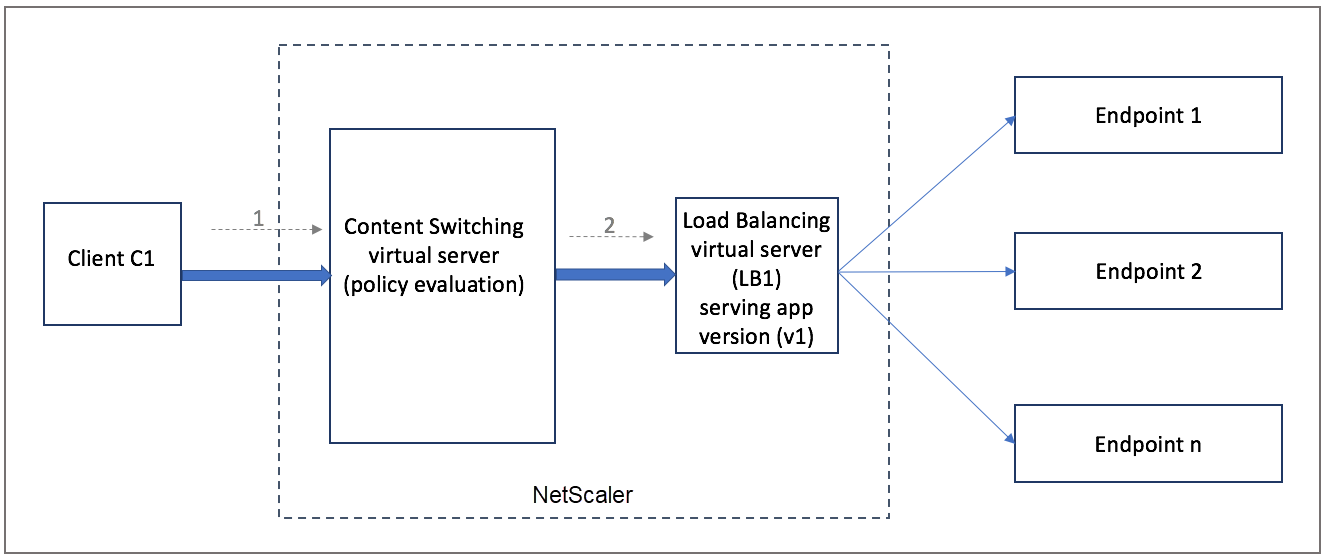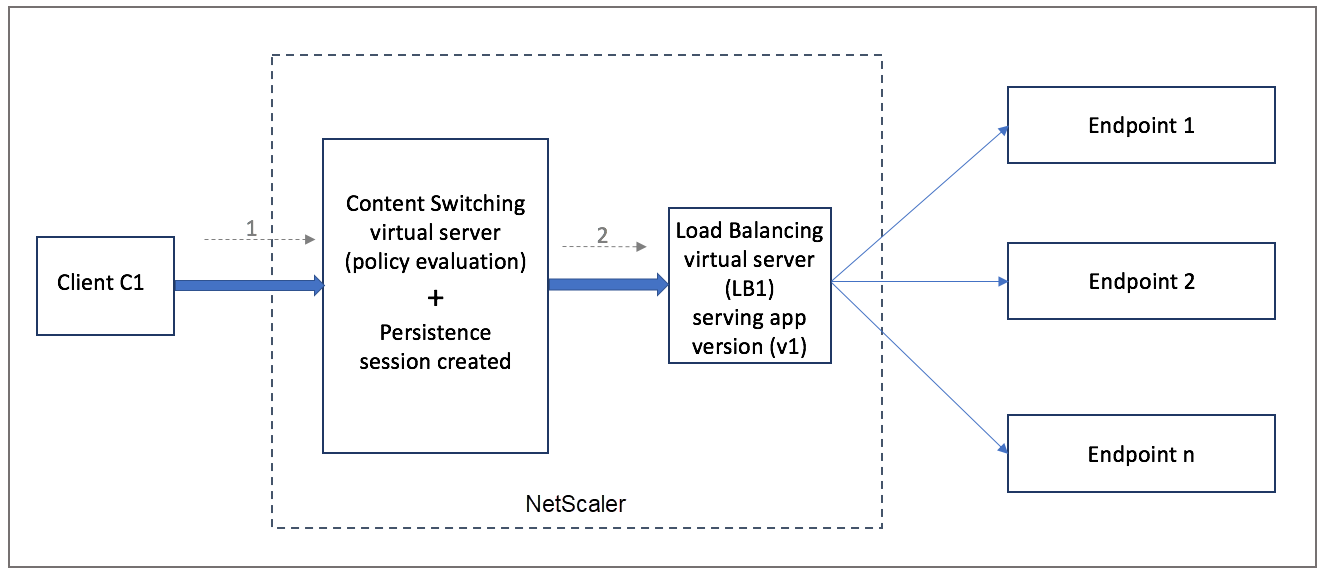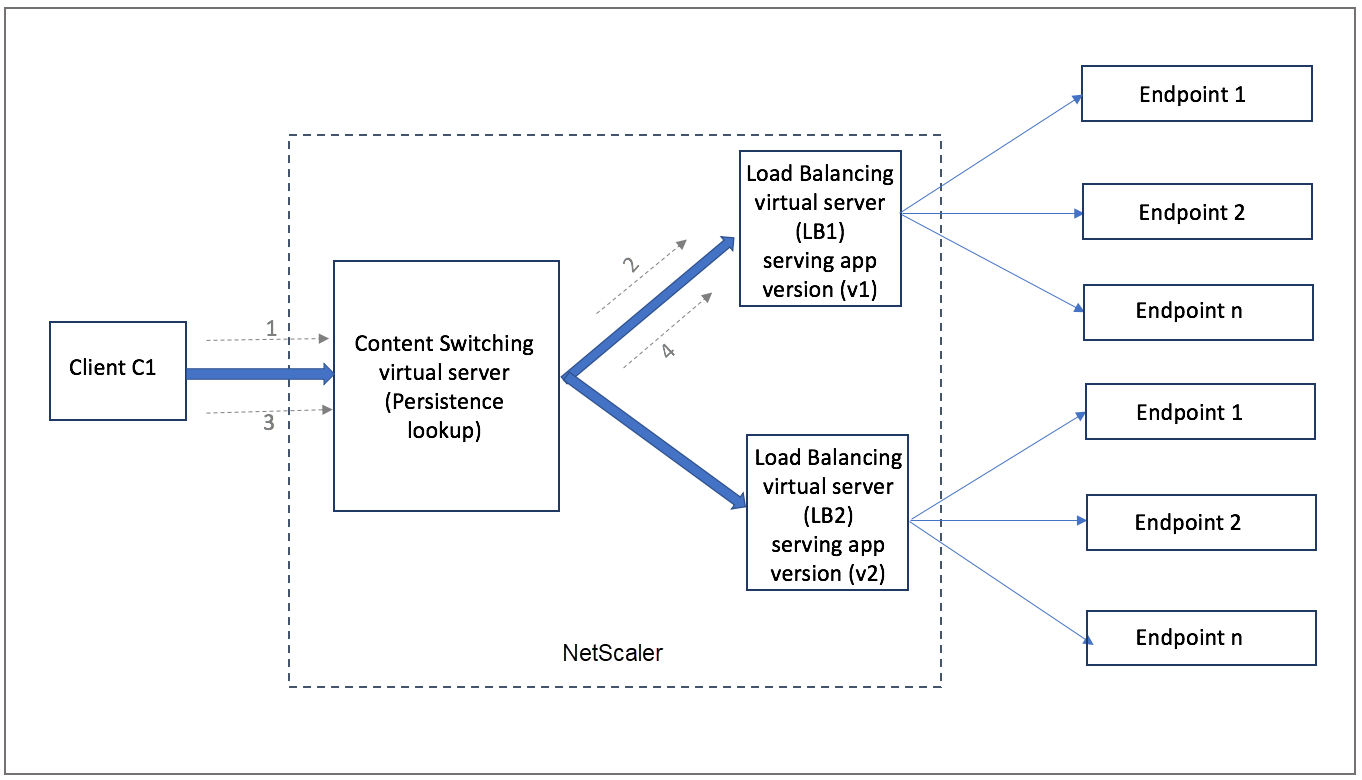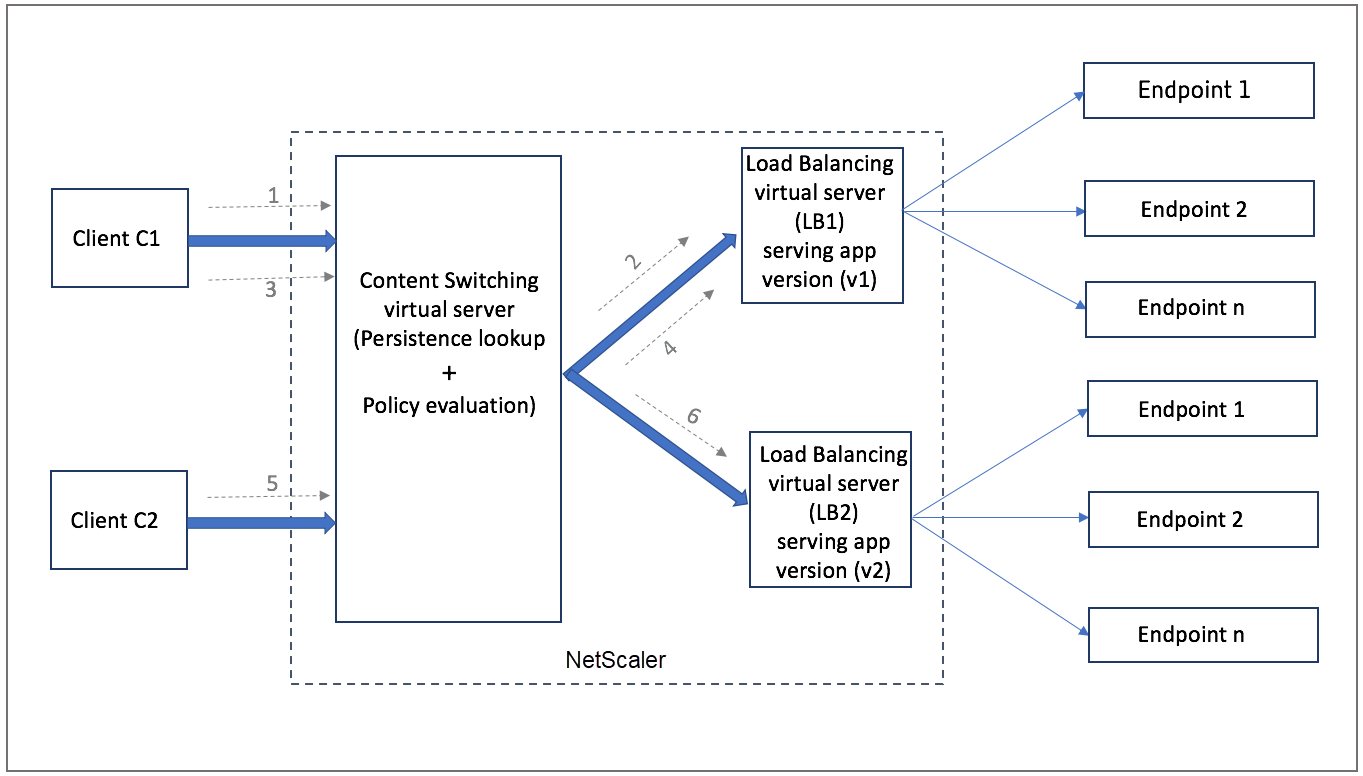-
Getting Started with NetScaler
-
Deploy a NetScaler VPX instance
-
Optimize NetScaler VPX performance on VMware ESX, Linux KVM, and Citrix Hypervisors
-
Apply NetScaler VPX configurations at the first boot of the NetScaler appliance in cloud
-
Configure simultaneous multithreading for NetScaler VPX on public clouds
-
Install a NetScaler VPX instance on Microsoft Hyper-V servers
-
Install a NetScaler VPX instance on Linux-KVM platform
-
Prerequisites for installing NetScaler VPX virtual appliances on Linux-KVM platform
-
Provisioning the NetScaler virtual appliance by using OpenStack
-
Provisioning the NetScaler virtual appliance by using the Virtual Machine Manager
-
Configuring NetScaler virtual appliances to use SR-IOV network interface
-
Configure a NetScaler VPX on KVM hypervisor to use Intel QAT for SSL acceleration in SR-IOV mode
-
Configuring NetScaler virtual appliances to use PCI Passthrough network interface
-
Provisioning the NetScaler virtual appliance by using the virsh Program
-
Provisioning the NetScaler virtual appliance with SR-IOV on OpenStack
-
Configuring a NetScaler VPX instance on KVM to use OVS DPDK-Based host interfaces
-
-
Deploy a NetScaler VPX instance on AWS
-
Deploy a VPX high-availability pair with elastic IP addresses across different AWS zones
-
Deploy a VPX high-availability pair with private IP addresses across different AWS zones
-
Protect AWS API Gateway using the NetScaler Web Application Firewall
-
Configure a NetScaler VPX instance to use SR-IOV network interface
-
Configure a NetScaler VPX instance to use Enhanced Networking with AWS ENA
-
Deploy a NetScaler VPX instance on Microsoft Azure
-
Network architecture for NetScaler VPX instances on Microsoft Azure
-
Configure multiple IP addresses for a NetScaler VPX standalone instance
-
Configure a high-availability setup with multiple IP addresses and NICs
-
Configure a high-availability setup with multiple IP addresses and NICs by using PowerShell commands
-
Deploy a NetScaler high-availability pair on Azure with ALB in the floating IP-disabled mode
-
Configure a NetScaler VPX instance to use Azure accelerated networking
-
Configure HA-INC nodes by using the NetScaler high availability template with Azure ILB
-
Configure a high-availability setup with Azure external and internal load balancers simultaneously
-
Configure a NetScaler VPX standalone instance on Azure VMware solution
-
Configure a NetScaler VPX high availability setup on Azure VMware solution
-
Configure address pools (IIP) for a NetScaler Gateway appliance
-
Deploy a NetScaler VPX instance on Google Cloud Platform
-
Deploy a VPX high-availability pair on Google Cloud Platform
-
Deploy a VPX high-availability pair with external static IP address on Google Cloud Platform
-
Deploy a single NIC VPX high-availability pair with private IP address on Google Cloud Platform
-
Deploy a VPX high-availability pair with private IP addresses on Google Cloud Platform
-
Install a NetScaler VPX instance on Google Cloud VMware Engine
-
-
Solutions for Telecom Service Providers
-
Load Balance Control-Plane Traffic that is based on Diameter, SIP, and SMPP Protocols
-
Provide Subscriber Load Distribution Using GSLB Across Core-Networks of a Telecom Service Provider
-
Authentication, authorization, and auditing application traffic
-
Basic components of authentication, authorization, and auditing configuration
-
Web Application Firewall protection for VPN virtual servers and authentication virtual servers
-
On-premises NetScaler Gateway as an identity provider to Citrix Cloud™
-
Authentication, authorization, and auditing configuration for commonly used protocols
-
Troubleshoot authentication and authorization related issues
-
-
-
-
-
Persistence support for content switching virtual server
-
-
Configure DNS resource records
-
Configure NetScaler as a non-validating security aware stub-resolver
-
Jumbo frames support for DNS to handle responses of large sizes
-
Caching of EDNS0 client subnet data when the NetScaler appliance is in proxy mode
-
Use case - configure the automatic DNSSEC key management feature
-
Use Case - configure the automatic DNSSEC key management on GSLB deployment
-
-
-
Persistence and persistent connections
-
Advanced load balancing settings
-
Gradually stepping up the load on a new service with virtual server–level slow start
-
Protect applications on protected servers against traffic surges
-
Retrieve location details from user IP address using geolocation database
-
Use source IP address of the client when connecting to the server
-
Use client source IP address for backend communication in a v4-v6 load balancing configuration
-
Set a limit on number of requests per connection to the server
-
Configure automatic state transition based on percentage health of bound services
-
-
Use case 2: Configure rule based persistence based on a name-value pair in a TCP byte stream
-
Use case 3: Configure load balancing in direct server return mode
-
Use case 6: Configure load balancing in DSR mode for IPv6 networks by using the TOS field
-
Use case 7: Configure load balancing in DSR mode by using IP Over IP
-
Use case 10: Load balancing of intrusion detection system servers
-
Use case 11: Isolating network traffic using listen policies
-
Use case 12: Configure Citrix Virtual Desktops for load balancing
-
Use case 13: Configure Citrix Virtual Apps and Desktops for load balancing
-
Use case 14: ShareFile wizard for load balancing Citrix ShareFile
-
Use case 15: Configure layer 4 load balancing on the NetScaler appliance
-
-
-
-
Authentication and authorization for System Users
-
-
-
Configuring a CloudBridge Connector Tunnel between two Datacenters
-
Configuring CloudBridge Connector between Datacenter and AWS Cloud
-
Configuring a CloudBridge Connector Tunnel Between a Datacenter and Azure Cloud
-
Configuring CloudBridge Connector Tunnel between Datacenter and SoftLayer Enterprise Cloud
-
Configuring a CloudBridge Connector Tunnel Between a NetScaler Appliance and Cisco IOS Device
-
CloudBridge Connector Tunnel Diagnostics and Troubleshooting
This content has been machine translated dynamically.
Dieser Inhalt ist eine maschinelle Übersetzung, die dynamisch erstellt wurde. (Haftungsausschluss)
Cet article a été traduit automatiquement de manière dynamique. (Clause de non responsabilité)
Este artículo lo ha traducido una máquina de forma dinámica. (Aviso legal)
此内容已经过机器动态翻译。 放弃
このコンテンツは動的に機械翻訳されています。免責事項
이 콘텐츠는 동적으로 기계 번역되었습니다. 책임 부인
Este texto foi traduzido automaticamente. (Aviso legal)
Questo contenuto è stato tradotto dinamicamente con traduzione automatica.(Esclusione di responsabilità))
This article has been machine translated.
Dieser Artikel wurde maschinell übersetzt. (Haftungsausschluss)
Ce article a été traduit automatiquement. (Clause de non responsabilité)
Este artículo ha sido traducido automáticamente. (Aviso legal)
この記事は機械翻訳されています.免責事項
이 기사는 기계 번역되었습니다.책임 부인
Este artigo foi traduzido automaticamente.(Aviso legal)
这篇文章已经过机器翻译.放弃
Questo articolo è stato tradotto automaticamente.(Esclusione di responsabilità))
Translation failed!
Persistence support for content switching virtual server
Applications are moving from monolithic architectures toward microservices architecture. Different versions of the same application can co-exist in the microservices architecture. NetScaler appliance must support continuous deployment of applications. It is achieved by platforms that perform Canary deployments (such as Spinnaker). In a continuous deployment setup, a newer version of an application is deployed automatically and exposed to client traffic in stages until the application is stable to take complete traffic. Also, there must be uninterrupted services to the client.
The NetScaler content switching feature enables NetScaler the appliance to distribute client requests across multiple load balancing virtual servers based on the policies bound to the content switching virtual server.
For continuous deployments, content switching is used to select the load balancing virtual server serving various versions of an application.
In content switching, the selection of a load balancing virtual server for a specific application version changes at runtime because of the change in the content switching policies. During this transition, if some sessions are present with older versions of the application, such traffic must continue to be served by older versions only. To support the requirement, the NetScaler appliance maintains persistence across multiple load balancing groups behind a content switching virtual server. Persistence for content switching virtual server enables seamless transition of clients from one version to another.
Supported persistence types on content switching virtual server
The following persistence types are supported on content switching virtual servers.
| Persistence type | Description |
|---|---|
| Source IP | SOURCEIP. Connections from the same client IP address are parts of the same persistence session. For more details, see Source IP address persistence. |
| HTTP Cookie |
COOKIEINSERT. Connections that have the same HTTP Cookie header are parts of the same persistence session. The format of the cookie that the NetScaler appliance inserts is: **NSC_ |
| SSL Session ID | SSLSESSION. Connections that have the same SSL Session ID are parts of the same persistence session. For more details, see SSL session ID persistence. |
You can configure a timeout value for persistence that is based on HTTP cookies. If you set the timeout value to 0, the ADC appliance does not specify the expiration time, regardless of the HTTP cookie version used. The expiration time then depends on the client software, and such cookies are valid only if the software is running.
Depending on the type of persistence that you have configured, the virtual server can support either 250,000 simultaneous persistent connections or any number of persistent connections up to the limits imposed by the amount of memory on your NetScaler appliance. The following table shows which types of persistence fall into each category.
| Persistence type | Number of simultaneous persistent connections supported |
|---|---|
| Source IP, SSL Session ID | 250,000 |
| HTTP Cookie | Memory limit. In CookieInsert, if the timeout is not 0, the number of connections is limited by memory. |
Some types of persistence are specific to particular types of virtual server. The following table lists each type of persistence and indicates which types of persistence are supported on which types of virtual server.
| Persistence type | HTTP | HTTPS | TCP | UDP/IP | SSL_Bridge | SSL_TCP | RTSP | SIP_UDP |
|---|---|---|---|---|---|---|---|---|
| SOURCEIP | Yes | Yes | Yes | Yes | Yes | Yes | No | No |
| COOKIEINSERT | Yes | Yes | No | No | No | No | No | No |
| SSLSESSION | No | Yes | No | No | Yes | Yes | No | No |
Backup persistence support
You can configure the content switching virtual server to use the source IP persistence type as the backup persistence type when the cookie persistence type fails. It is useful for canary deployments in the microservices architecture. When the cookie persistence type fails, the appliance falls back to source IP based persistence only when the client browser does not return any cookie in the request. However, if the browser returns a cookie (not necessarily the persistence cookie) it is assumed that the browser supports cookies and hence backup persistence is not triggered. You can also set a timeout value for backup persistence. Timeout is the time period for which a persistence session is in effect.
How persistence on content switching virtual server works
Scenario 1: A content switching virtual server without persistence
The following example illustrates the deployment of multiple versions of an application with a content switching virtual server without persistence.

When client C1 sends a request to the application, the request is sent to the content switching virtual server in the NetScaler appliance. The content switching virtual server evaluates the policy and forwards the request to the load balancing virtual server (LB1) that is serving version v1 of the application.

Consider a new version v2 of the application is deployed and has to be exposed to a subset of users. The new load balancing virtual server (LB2) serving the v2 version is bound to the content switching virtual server by the appropriate content switching policy.
When client C1 sends a new request, the policy is evaluated again and the request is forwarded to the load balancing virtual server LB2. Thus, the transactions for stateful applications fail if multiple versions of the application are deployed.
Scenario 2: Content switching virtual server with persistence
The following example illustrates the deployment of multiple versions of the application with a content switching virtual server with persistence.

When client C1 sends a request to the application, the request is sent to the content switching virtual server in the NetScaler appliance. The content switching virtual server evaluates the policy, creates a persistence session entry, and forwards the request to the load balancing virtual server LB1 that is serving version v1 of the application.

The same client C1 requests again for the application, and the request is sent to the content switching virtual server in the NetScaler appliance. A lookup for the persistence session is performed. Since an existing entry is found, the load balancing virtual server LB1 is selected from the existing persistence session, and the request is forwarded to LB1. Therefore, CS policy evaluation is not performed in this scenario. No breakage of the existing transaction happens with this solution; thus, maintaining the stateful nature of the application.

Let’s consider a new client C2. The new request C2 is sent to the newer version of the application through policy evaluation as there is no existing persistence session for this client. It results in a successful rollout of the newer version of the application without breaking its statefulness.
Because of the persistence support, customers can deploy multiple content or different versions of the application seamlessly without impacting the existing transactions, specifically for stateful applications. It is not possible without persistence in the picture.
Configure persistence type on content switching virtual server by using the CLI
At the command prompt, type:
set cs vserver <name> -PersistenceType <type> [-timeout <integer>]
<!--NeedCopy-->
Example:
set cs vserver Vserver-CS-1 -persistenceType SOURCEIP -timeout 60
<!--NeedCopy-->
Configure persistence type on content switching virtual server by using the GUI
-
Navigate to Traffic Management > Content Switching > Virtual Servers and click Add.
-
In Basic Settings, configure the persistence details.
Share
Share
In this article
- Supported persistence types on content switching virtual server
- Backup persistence support
- How persistence on content switching virtual server works
- Configure persistence type on content switching virtual server by using the CLI
- Configure persistence type on content switching virtual server by using the GUI
This Preview product documentation is Cloud Software Group Confidential.
You agree to hold this documentation confidential pursuant to the terms of your Cloud Software Group Beta/Tech Preview Agreement.
The development, release and timing of any features or functionality described in the Preview documentation remains at our sole discretion and are subject to change without notice or consultation.
The documentation is for informational purposes only and is not a commitment, promise or legal obligation to deliver any material, code or functionality and should not be relied upon in making Cloud Software Group product purchase decisions.
If you do not agree, select I DO NOT AGREE to exit.